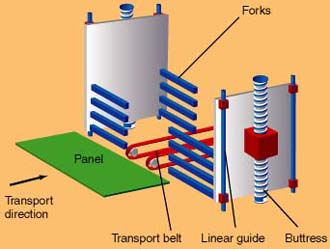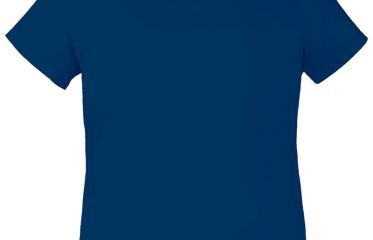Graphics Printing
Published
11 years agoon

Graphics applications can vary widely, and not many universal rules exist when choosing a media on which to print. There are many factors to consider, from the initial printing method to the environment in which the graphic will ultimately reside—all of which can affect which print media will deliver the best performance for the application. As a result of these many variables, one of the only rules to follow when attempting to determine an appropriate graphic printing material is to ask important questions up front. The following guide will help you with these conversations.
Graphics applications can vary widely, and not many universal rules exist when choosing a media on which to print. There are many factors to consider, from the initial printing method to the environment in which the graphic will ultimately reside—all of which can affect which print media will deliver the best performance for the application. As a result of these many variables, one of the only rules to follow when attempting to determine an appropriate graphic printing material is to ask important questions up front. The following guide will help you with these conversations.
1. What sort of graphic are you planning to print?
This first question may seem like a basic one, but it is a great starting point. Whether you are printing simple text or a large, ink-rich graphic can make a difference when it comes to choosing between economy or high-end print media or liners. Your supplier needs to know what your graphic is ultimately meant to accomplish.
2. What printing method are you going to use?
It is very important to share your plans for printing with a material supplier, because print media can respond very differently to various printing methods. For instance, latex printers may require higher quality films and liners to properly handle the high temperatures used on the printer.
Here’s another example: While printing with UV-cured inks is a great way to make quality images, you should think twice about using these inks for automotive wraps, because UV-based ink is prone to cracking when stretched. A lot of stretching is involved when applying vehicle wraps.
Additionally, not many laminates stick to UV-inkjet-printed graphics, unless a specially designed adhesive is used. The process of UV-inkjet printing can cause damage to films when UV light hits a portion of the graphic many times during printing, potentially over-curing the ink and damaging vinyl films. This form of accelerated aging causes degradation, especially with economy films, which may become brittle.
3. Will a graphic be used indoors or outdoors?
This question, simple as it may be, must be answered to avoid major repercussions. Outdoor environments have specific requirements regarding resistance to UV, moisture, temperature, and so on—considerations that may not apply to an indoor graphic—making location prudent to mention to your supplier.
4. What environmental elements will act on the graphic?
Many forces can act upon media, whether a graphic is located outdoors or indoors. Your supplier needs to know about these elements to provide an effective recommendation. Will chemicals, temperature, moisture, or other factors affect the graphic? How about wind and precipitation? Different print media and adhesives are available to resist damage from exposure, but a supplier may not be recommended the best options if you don’t call out environmental factors for the indoor and outdoor graphics you produce.
5. To what surface will the printed media be adhered?
There is much to be said on the subject of adhesives as there is substantial variance between different adhesive formulations to ensure adhesion to specific surfaces. For instance, an acrylic-based adhesive may need to be used to adhere to high-energy surfaces, whereas a rubber-based adhesive offers better tack with low-energy surfaces. Also, certain surfaces, such as rough brick or cement-block walls and floors, may require very specialized print media (Figure 1).
6. Will a graphic need to be repositioned?
Another consideration when it comes to adhesives is the idea of permanence versus repositionability. Some print media can be easily repositioned on walls (Figure 2). Other materials, however, are meant to go on and stay on, lasting for an extended period. Be clear with a supplier regarding your repositionability needs to ensure the appropriate adhesive is chosen.
7. How long does a graphic need to last?
Longevity is a key consideration. Some economy print media can be attained for very little investment, but these substrates may not be meant for long-term use. Remember that printing methods and environmental elements can affect how long printed substrates last; therefore, you might need to replace media that may be labeled as two-year material earlier if you do not account for certain conditions.
8. Will this graphic be placed over another graphic?
Sometimes, particularly with signage, a graphic might be placed over an existing graphic to save time and removal effort, especially when the applicator is not professionally trained. Screen-printed graphics can be difficult to adhere to, however, and a specialized adhesive may be required to accomplish this job.
9. Who will be applying this graphic?
The level of a graphics applicator’s skill is a consideration that is often times overlooked. Certain applications must be handled by professionals only, such as vehicle wraps and rough wall graphics. Other surfaces are more conducive to beginner graphics applications, however, such as flat, P-O-P, floor or window graphics. Certain print media have built-in error correction, such as bubble-free window films (Figure 3), and heavier, stiffer facestocks and laminates can make handling and installation of print media easier.
10. Will the graphic be laminated?
Laminates not only make installation easier in some cases, but they also make graphics far more durable. In certain settings such as schools, mass transportation, and hospitals, this durability can be important to resist impact damage, laceration, and other physical abuse. Some laminates bear anti-graffiti properties that can provide protection and make cleaning simpler. Other laminates can be purely decorative, adding a texture or finish to a graphic that may otherwise be lacking. You can count on your supplier to best pair print media with appropriate laminates.
11. Will backlighting be used with a graphic?
Signs are sometimes illuminated by backlighting, and special print media may need to be used for best results in these cases. For instance, films may need to be translucent, dusted, or otherwise specialized to hide bulbs or diffuse light evenly to prevent bright spots from appearing behind sections of a graphic. Lights need to be properly ventilated to prevent fire hazards and damage to graphics. Suppliers can often advise the best way to laminate a graphic onto a light box without causing risk.
12. How will a graphic be cleaned?
Cleaning agents, even water, can be detrimental to a film. For example, a vehicle graphic may need to be hand washed, not run through an automatic car wash. Laminates can help to prevent issues, and suppliers can give advice on expected graphic care so that your images remain sharp while the substrate’s integrity is maintained.
13. Do products need to be environmentally friendly?
Print media can be chosen to meet needs in applications where ecological consciousness is a concern. Architects may be given incentives to use environmentally friendly materials, so it is prudent to let suppliers know when a green solution is preferred.
14. What am I missing?
This is one of the most crucial questions of all, as, inevitably, there will be some factors of which you are not aware that affect media choice. Asking an expert for an opinion about whether you should be accounting for any other aspect of your application is a great way to make sure all of your bases are covered.
This article was provided by Jeff Stadelman, MACtac Graphic Products, Stow, OH.

Subscribe

Magazine
Get the most important news
and business ideas from Screenprinting Magazine.
Most Popular
-

 Case Studies2 months ago
Case Studies2 months agoHigh-Density Inks Help Specialty Printing Take Center Stage
-

 Art, Ad, or Alchemy2 months ago
Art, Ad, or Alchemy2 months agoF&I Printing Is Everywhere!
-

 Andy MacDougall2 months ago
Andy MacDougall2 months agoFunctional and Industrial Printing is EVERYWHERE!
-

 Columns3 weeks ago
Columns3 weeks ago8 Marketing Mistakes Not to Make When Promoting Your Screen Printing Services Online
-

 Editor's Note3 weeks ago
Editor's Note3 weeks agoLivin’ the High Life
-

 Marshall Atkinson3 weeks ago
Marshall Atkinson3 weeks agoHow to Create a Winning Culture in Your Screen-Printing Business
-

 Thomas Trimingham2 months ago
Thomas Trimingham2 months ago“Magic” Marketing for Screen Printing Shops
-

 News & Trends2 months ago
News & Trends2 months agoWhat Are ZALPHAS and How Can You Serve Them in Your Print Business?






